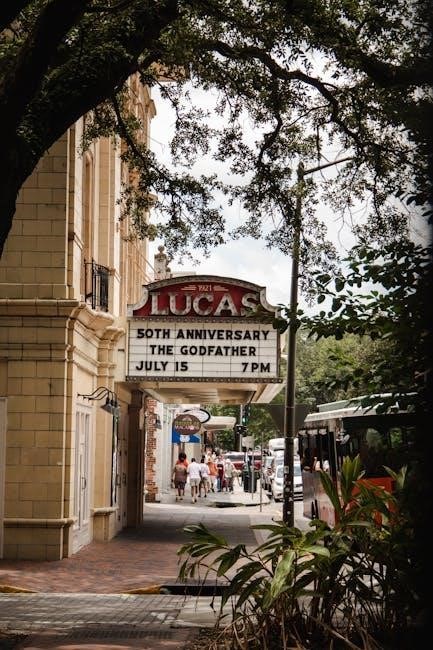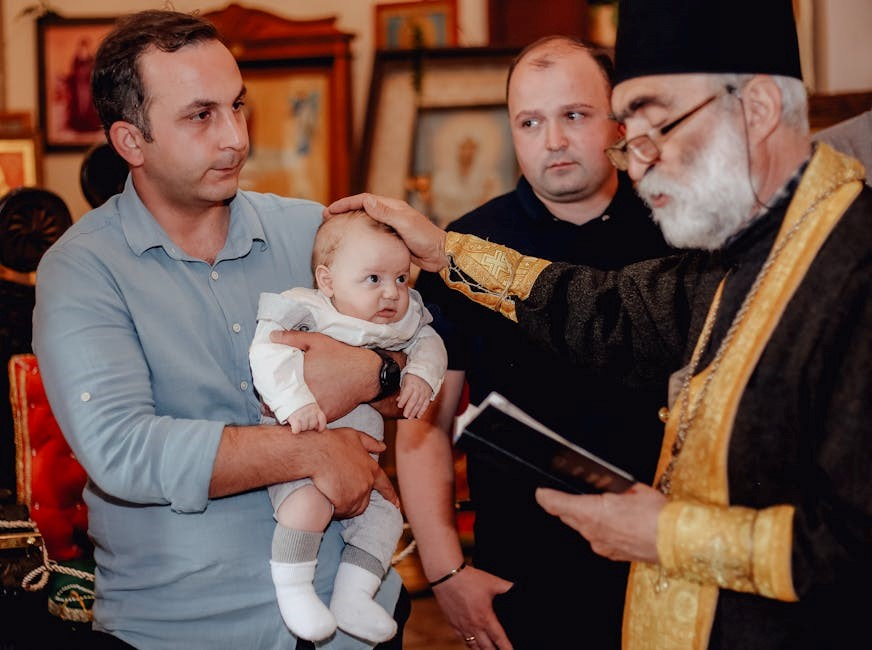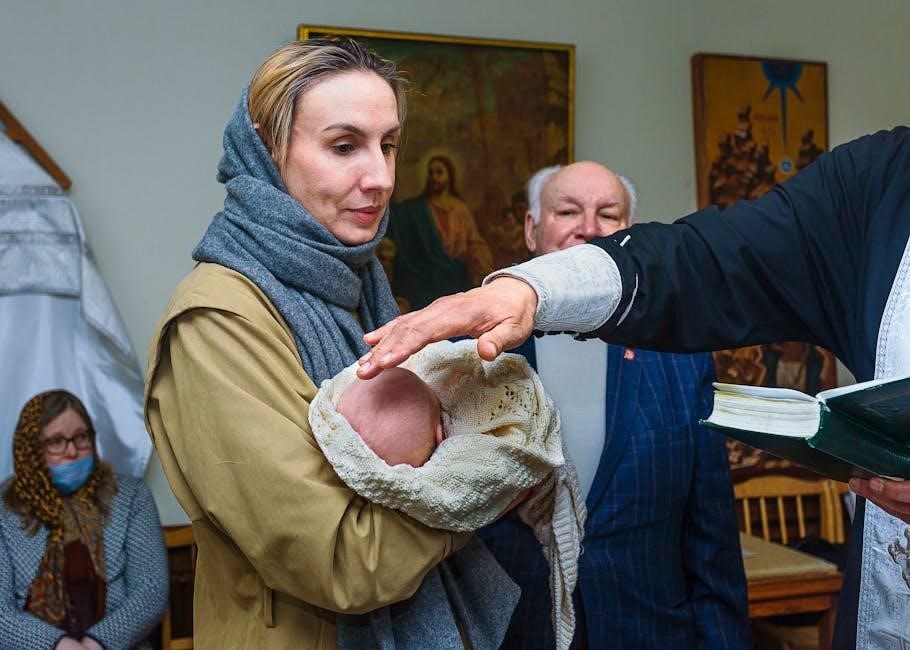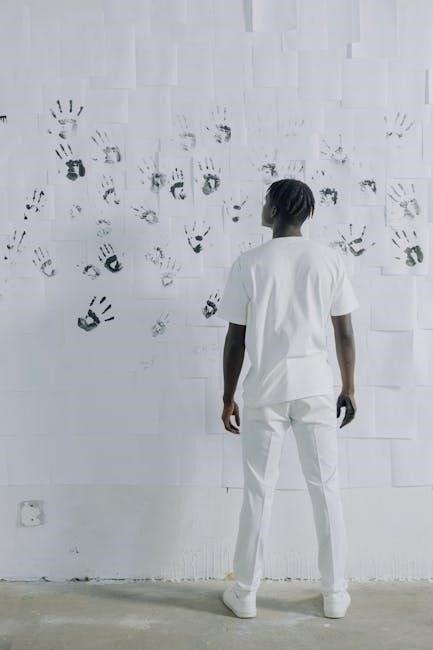Mario Puzo’s novel and Francis Ford Coppola’s film adaptation of The Godfather explore the intricate world of the mafia, power, and family dynamics; This iconic tale delves into themes of loyalty, betrayal, and the American Dream, captivating audiences worldwide․ The story revolves around the Corleone family, their rise to power, and the moral dilemmas they face, leaving a lasting legacy in literature and cinema․
1․1 Overview of the Novel and Film
Mario Puzo’s novel The Godfather, published in 1969, and its 1972 film adaptation by Francis Ford Coppola, explore the rise and struggles of the Corleone family in the world of organized crime․ The story delves into themes of power, loyalty, and betrayal, offering a gripping portrayal of the mafia lifestyle․ Both the book and film achieved immense success, with the movie becoming a cultural phenomenon and earning numerous accolades․ The narrative centers around Don Vito Corleone and his family’s efforts to maintain control in a changing world, blending drama with intense moral conflicts․
1․2 Historical Context and Background
The Godfather is set against the backdrop of mid-20th-century America, exploring the rise of organized crime during the Prohibition era and its evolution․ The story reflects the cultural and societal shifts of the time, including the decline of traditional mafia values and the rise of corporate-style crime․ Historical events, such as the Kefauver Committee hearings, influenced public perception of the mafia, while Puzo’s narrative delves into the moral complexities and power struggles within criminal families, blending fiction with real-world inspirations to create a compelling and relatable tale․

Key Characters in “The Godfather”
The novel and film center around Don Vito Corleone, the powerful mafia patriarch, and his family, including Michael, the reluctant heir, and other pivotal figures shaping the story․
2․1 Don Vito Corleone: The Patriarch
Don Vito Corleone, the aging mafia boss, commands respect and fear as the head of the Corleone family․ His leadership is rooted in a code of honor, loyalty, and ruthless pragmatism․ Portrayed by Marlon Brando, Vito embodies gravitas and wisdom, with a deep understanding of power dynamics․ His calm demeanor and calculated decisions reflect a lifetime of navigating the treacherous world of organized crime․ Originating from Sicily, Vito built his empire in New York, becoming a formidable figure in both legitimate and illicit enterprises․ His priority is family loyalty, which he values above all else, shaping his actions and legacy in the story․
2․2 Michael Corleone: The Reluctant Heir
Michael Corleone, the youngest son of Don Vito, is initially reluctant to embrace the family’s mafia legacy․ Portrayed by Al Pacino, Michael transitions from a detached war hero to a ruthless mafia boss․ His transformation begins after an assassination attempt on his father, forcing him to take responsibility․ Despite his initial reluctance, Michael’s loyalty to his family drives him to commit tragic acts, solidifying his position as the new Don․ His evolution from outsider to powerful leader is central to the story, highlighting the moral compromises and consequences of his choices․
2․3 Other Notable Characters: Family and Enemies
Beyond the Corleone patriarchs, the story is enriched by complex characters․ Sonny Corleone, the hot-headed eldest son, embodies impulsive loyalty, while Fredo, the weakest link, struggles with betrayal․ Tom Hagen, the consigliere, serves as the family’s legal expert and voice of reason․ Enemies like Sollozzo and the Tattaglia family pose threats, driving conflicts․ These characters, both within and outside the family, shape the narrative, exploring themes of loyalty, betrayal, and power․ Their interactions with the Corleones create a layered tapestry of alliances and rivalries that define the story’s tension and tragedy․

Major Themes in “The Godfather”
The novel and film explore themes of power, loyalty, and betrayal, delving into the moral complexities of the mafia world․ The American Dream is critiqued through the Corleones’ rise, while family, honor, and identity shape their choices, creating a rich tapestry of human conflict and ethical dilemmas․
3․1 Power, Loyalty, and Betrayal
Power dynamics drive the narrative, with Don Vito Corleone’s authority tested by loyalty and betrayal․ The mafia code demands unwavering fidelity, yet personal ambitions often lead to deceit․ Betrayals, such as the attempted assassination of Vito and Michael’s eventual rise, highlight the fragile balance between power and trust․ Loyalty is both a strength and a vulnerability, as characters grapple with the consequences of their choices, illustrating the destructive nature of betrayal in the pursuit of power․ These themes form the emotional core of the story․
3․2 The American Dream and Its Illusions
The Godfather critiques the American Dream, portraying it as an illusion achievable only through morally questionable means․ The Corleone family’s rise to power exemplifies this, blending legitimacy with criminality․ Their pursuit of status and wealth reflects the Dream’s promise but reveals its darker side․ The novel and film highlight how the illusion of respectability often masks the compromises and sacrifices made to attain it, challenging the notion of a merit-based society and exposing the moral complexities of success․
3․3 Family, Honor, and Identity
Family, honor, and identity are central themes in The Godfather, shaping the characters’ motivations and choices․ The Corleone family’s bonds are rooted in loyalty and tradition, with honor serving as a moral compass․ Identity is deeply tied to familial roles, as seen in the patriarchal structure led by Don Vito․ The story explores how personal and cultural identity influence decisions, often leading to sacrifices for the family’s sake․ This interplay highlights the tension between individual aspirations and collective responsibility, defining the characters’ sense of self and purpose․

The Godfather: Novel vs․ Film
The novel provides deeper character insights and subplots, while the film streamlines the narrative, focusing on key events and omitting certain characters and storylines for brevity․
4․1 Differences in Storytelling and Character Development
The novel delves deeper into character backstories and motivations, offering richer emotional layers, while the film simplifies the narrative for visual storytelling․ The book explores subplots like Johnny Fontane’s struggles and Luca Brasi’s character, which are minimized or omitted in the film․ Mario Puzo’s prose provides internal monologues and detailed descriptions, whereas the movie relies on dialogue and cinematography to convey themes․ This adaptation process highlights how each medium shapes the audience’s understanding of the Corleone family’s dynamics and the moral complexities of their world․
4․2 Adaptation Process and Director’s Vision
Francis Ford Coppola’s adaptation of The Godfather involved a collaborative effort with Mario Puzo to streamline the novel’s complex narrative․ Coppola focused on the Corleone family’s core dynamics, emphasizing themes of power and loyalty through visual storytelling․ The director’s vision included iconic cinematography, with warm lighting symbolizing the family’s fading Old World values․ Nino Rota’s haunting score further enriched the emotional depth․ Coppola’s meticulous attention to detail transformed the novel into a cinematic masterpiece, capturing the essence of Puzo’s work while creating a unique filmic experience․

Cultural and Historical Significance
The Godfather is a cultural phenomenon, influencing media and society․ Its portrayal of the mafia reshaped popular culture, becoming a landmark in cinema history and societal perception․
5․1 The Portrayal of the Mafia in Popular Culture
The Godfather revolutionized the portrayal of the mafia in popular culture, presenting a complex, nuanced depiction of organized crime․ It humanized mafia figures, blending brutality with family values and loyalty․ The film’s authenticity and depth influenced countless works, from The Sopranos to Goodfellas, shaping public perceptions of mafia life․ Its impact lies in balancing crime with relatable emotions, creating a lasting cultural legacy that continues to inspire storytelling about power and identity․
5․2 Impact on Film and Literature
The Godfather has profoundly influenced both film and literature, setting new standards for storytelling and character development․ Its layered narrative and moral complexity have inspired filmmakers and authors worldwide․ The film’s innovative cinematography, score, and direction redefined the crime genre, while its exploration of power and family dynamics resonated deeply with audiences․ The novel and film’s success also spurred adaptations and reinterpretations, solidifying their place as cultural touchstones that continue to shape contemporary media and storytelling techniques across genres․

Symbolism and Motifs
The Godfather richly employs symbols like the olive oil business, representing the family’s legitimate facade, and darkness, signifying secrecy and danger, to explore power and loyalty themes․
6․1 The Use of Food, Family Gatherings, and Rituals
Food, family gatherings, and rituals in The Godfather symbolize tradition, unity, and cultural identity․ Meals like pasta and wine represent warmth and togetherness, while baptisms and weddings highlight loyalty and honor․ These moments often contrast with the darker side of the family’s business, underscoring the tension between personal and professional lives․ The preparation and sharing of food, particularly by women, emphasize the importance of family bonds and continuity․ Rituals, such as the kissing of hands, reinforce hierarchy and respect, central to the mafia code․ These elements deeply enrich the narrative, blending tradition with power dynamics․
6․2 The Role of Setting: Sicily, New York, and Las Vegas
The contrasting settings of Sicily, New York, and Las Vegas in The Godfather reflect the cultural and thematic evolution of the Corleone family․ Sicily represents tradition, family roots, and the mafia’s origins, while New York embodies the harsh realities of urban power struggles․ Las Vegas, with its glitz and excess, symbolizes the expansion of criminal enterprises and the corrupting influence of wealth․ These locations not only shape the characters’ identities but also serve as backdrops for the transition from old-world values to modern ambition, highlighting the tension between heritage and progress․

Legacy and Influence
The Godfather has left an indelible mark on film and literature, influencing countless works with its storytelling, character depth, and exploration of power․ Its enduring cultural impact remains unparalleled․
7․1 Influence on Other Films and Media
The Godfather has profoundly shaped the mafia genre, inspiring numerous films, TV shows, and books․ Its complex characters, moral dilemmas, and atmospheric storytelling have set a benchmark for crime dramas․ Many directors, including Martin Scorsese, have cited it as a key influence․ The film’s iconic dialogue and score have been widely parodied and referenced in popular culture, from comedy sketches to music․ Its exploration of power, loyalty, and betrayal continues to resonate, ensuring its enduring impact on media and storytelling․
7․2 Cultural References and Parodies
The Godfather has inspired countless parodies and references in popular culture․ From comedy sketches to music lyrics, its iconic scenes, like the horsehead trope, are instantly recognizable․ TV shows such as The Simpsons and films like Scary Movie have humorously mimicked its memorable moments․ These references underscore the film’s enduring influence, cementing its status as a cultural touchstone․ The ability to evoke both reverence and parody highlights its lasting impact on media and society;
The Godfather remains a monumental work in literature and cinema, exploring themes of power, family, and the mafia․ Its intricate storytelling and compelling characters have left an indelible mark on popular culture․ The film’s influence is evident in countless references and parodies, showcasing its enduring relevance․ As a cultural icon, The Godfather continues to captivate audiences, offering timeless insights into human nature and the complexities of power․ Its legacy ensures it will forever be celebrated as a masterpiece of storytelling and cinematic artistry․